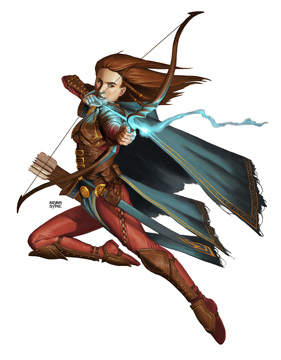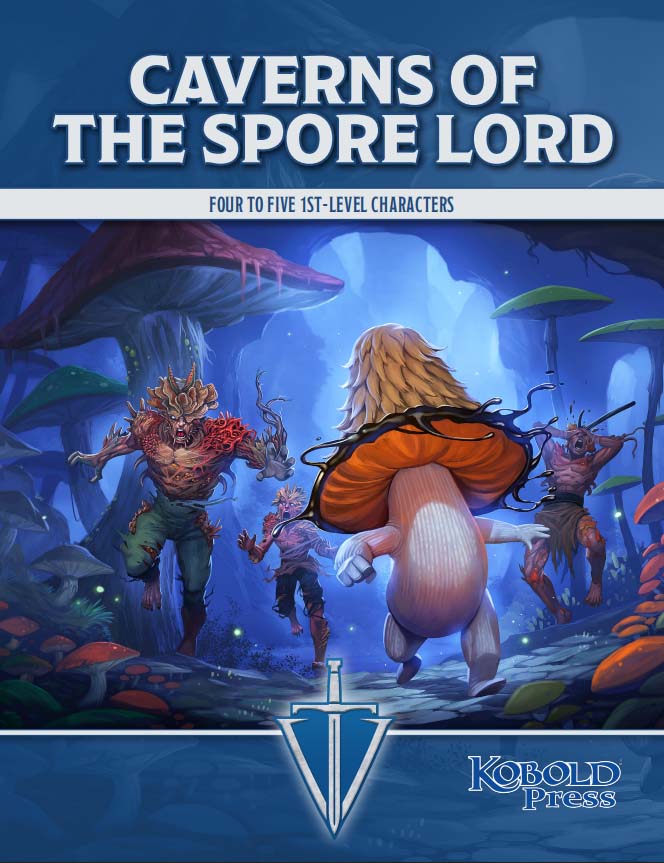
Our previous posts have covered several best practices for running and playing in one-on-one games. But how do you know if this style of play is right for you? What are some advantages of playing this way rather than in a group?
Though each one-on-one campaign will be unique to its player and GM, there are several benefits of this playing style for both player and GM, whether you’re playing with a friend, child, or partner. In this post, we’ll look at the advantages of playing the protagonist, increased options in character types, the joys of focused storytelling, deeper levels of character development, leaning into favorite types of play, and of course ease of scheduling!
Player Benefits
First, let’s focus on the player benefits.
Focused Attention
There’s something really special about practicing being the hero of your own story. I love that 5E gives us the chance to be brave and daring, to set risk aside and go after what we truly want, answering destiny’s call.
A chief benefit for the player in a one-on-one game is that all of the focus is on you and your PC—you’re the protagonist! Being the protagonist doesn’t mean your character has to be outgoing or enjoy being the center of attention. However, it is a great way to practice being actively involved in gameplay and to dive deep into your character’s head. (We’ve written previously about being an active player and co-creation if you need a refresher or further tips.)
Additional Character Types
I’ve found that one-on-one play also opens up the types of characters you can play at the table. It works well for evil campaigns, if you’d like to try that out, but it also suits particular fantasy tropes that may not work as well in a group. For example, why is the rogue loner saddling themselves with a cleric and a barbarian when they’d rather do whatever they can to enrich themselves? For some, there’s a simple answer to this question, and it makes sense for the roguish PC to join up with an adventuring party.
But other characters really would prefer to work alone, or perhaps with one other person whom they trust absolutely. Playing one-on-one increases the variety of the types of stories—and whose stories—we can tell.
GM Benefits
Now, let’s turn our attention to the GM.
Focused Storytelling
For storytellers, creativity flourishes within limitations. For instance, look at the ingenious workarounds that low-level characters manage as opposed to their higher-tier counterparts. Limited abilities restrict the power of their actions but spark creative solutions!
This same effect holds true in our storycrafting as GMs—some challenges are better suited to a single character (or small group, with your GMPC) than they are to a larger adventuring party and vice versa. Lean into the PC’s class, backstory, weaknesses, proclivities, and you’ll uncover some truly unique story prompts, villains, story complications, and more! You can read further about crafting single-character campaign arcs here.
The Plight of the Forever GM
If you’re the person who is always the GM and never a PC, playing in a one-on-one game can be a great middle ground for you! The PC’s companion character (or characters) needs to be well developed with motivations of their own. This helps the player to be more invested in their own character, the story world, and the campaign, but it also gives you unique access into the world as a character. Set aside your vast hoard of GM knowledge and escape into the mind of your GMPC!
One-on-one play also gives you the chance to switch GM and player roles—maybe your adventurers have a tiff and need to part ways for a short while. The player can run a special narrative arc just for your GMPC while you sit back and take a break from the rigors of the GM’s chair!
For Both Players & GMs
And now for all involved.
Secondary Characters
One benefit we didn’t expect at first was being able to pause our primary campaign and follow secondary narrative threads. In fact, one of our favorite campaign arcs came about through developing a side story for a secondary character! Jonathan and I were both intrigued by her fierce, adventurous spirit, but she wouldn’t have fit as a long-term member of our main adventuring party. Instead, Jonathan crafted a side campaign for her between arcs in our primary storyline. The side narrative was darker than our other game and provided a refreshing change of pace while we explored a new area and characters.
Favorite Parts of Play
This is another shared benefit between players and GMs—since there are fewer people to appease at the table, you can spend more time on the parts of play you most enjoy! Do you want to play a game of courtly intrigue where the only stabbings that take place occur from the sharpness of a glare, a carefully crafted insult, or an assassin’s untraceable blade? Alternatively, would you like to play out a long series of gladiatorial encounters unimpeded by the meticulous plod of a puzzle-laden dungeon or the bore of vapid conversations with bright-eyed villagers untouched by the glories of battle? So long as it makes you both happy, you can do exactly that!
Scheduling Ease
Last but not least, when you’re playing in a one-on-one game, you only have two schedules to juggle instead of however many party members you have! The best practices from group play and scheduling apply here as well—carve out a regular time each week, or however often you plan to play, and do your best to stick to it.
We would also suggest having a conversation around when you want to talk about your one-on-one game away from the table. Is Monday morning at breakfast off limits? If you’re like me and struggle to keep secrets from your player, perhaps you’ll want to debrief with them after the session but not give hints about what’s coming up in the next game.
One of my favorite parts about playing one-on-one is having a heap of wonderful memories and shared experiences with someone you care about. Like quoting lines from your favorite movie, your one-on-one campaign can create inside jokes and funny stories for you to recount together. You’ll just want to make sure not to transgress your playing partner’s boundaries around the campaign out of game. “Real-life” adventures are important too!
We hope that this list of advantages has persuaded you to try out the world of one-on-one 5E!
___
You can find more advice and ideas for one-on-one play at dndduet.com.

